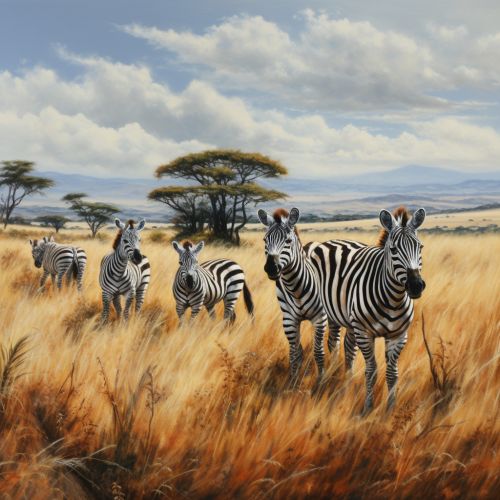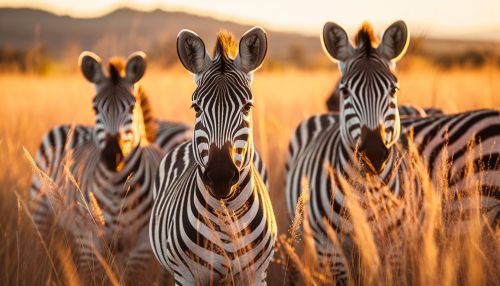Zebra
Taxonomy and Evolution
Zebras are part of the family Equidae, which also includes horses and donkeys. The genus Equus is Latin for "horse", and the term "zebra" is believed to come from an Old Portuguese word meaning "wild ass". Zebras evolved from equid ancestors some 4-5 million years ago in what is now Africa, where they have remained endemic.


Species and Subspecies
There are three extant species of zebras: the Plains Zebra (Equus quagga), the Mountain Zebra (Equus zebra), and the Grevy's Zebra (Equus grevyi). Each species has distinct physical characteristics and inhabits different regions of Africa. The Plains Zebra is the most common and geographically widespread, while the Grevy's Zebra is the largest in size.
Physical Characteristics
Zebras are known for their distinctive black and white striped coats. The stripes are unique to each individual, with the striping pattern varying amongst the different species. The function of the stripes has been the subject of much scientific debate, with hypotheses including temperature regulation, social interaction, and a means to deter biting insects.
Behavior and Ecology
Zebras are social animals, living in small family groups consisting of a stallion, several mares, and their offspring. These groups may come together to form larger herds, particularly during migrations. Zebras are herbivores, primarily grazing on grasses, although they will also eat shrubs, herbs, twigs, leaves, and bark.
Conservation
All three species of zebra face threats from habitat loss due to farming and ranching, as well as hunting and poaching for their skins. The Grevy's Zebra is listed as endangered, with fewer than 2,500 individuals remaining in the wild.
